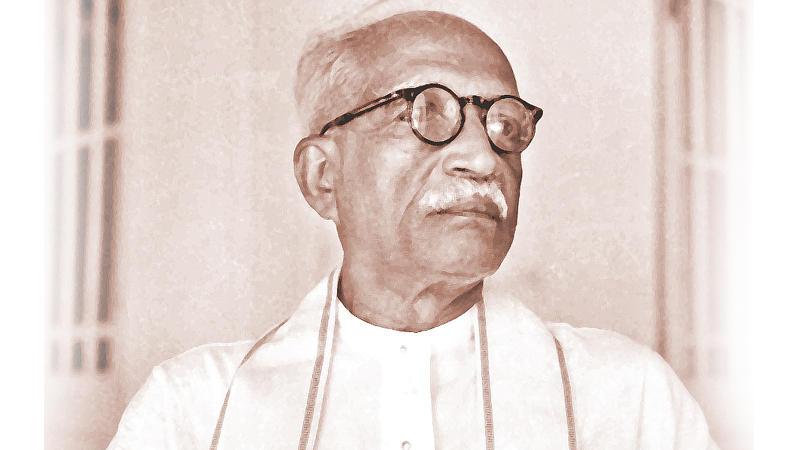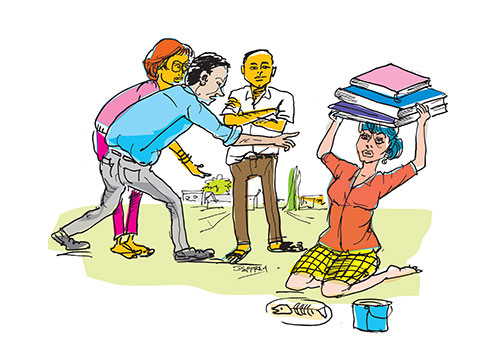By Aruni Samarakoon
Recently, I was in a discussion on Feminism with the members of the Post-Graduate Research (PGR) community at the University of Hull, in the United Kingdom. They were my colleagues, from the Middle-East, Asia and Europe, representing the natural and social sciences, but, apparently, did not possess any prior knowledge on feminism. I say this because most in the natural sciences seemed to characterise feminism as a political ideology against man (man in this context represents male). This discussion provoked me to recollect why feminism was stereotyped by these scholars, who were researching for their doctoral degrees at the time.
The objective of this article is to extend my argument of teaching feminism at the Sri Lankan universities in my last Kuppi column (25/10/2022), which drew attention to the gaps in teaching and learning feminism in the classroom and practicing it in everyday life.
I introduced the basic notion of feminism in my last Kuppi column, but would like to extend the conceptual understanding of feminism in a new direction, that is the notion that feminism is not an anti-man discourse. bell hooks—lowercase letters symbolise, for hooks, resistance to injustice and prejudice in the capitalist system or a “new language” of equality and justice for all—in Feminism for Everybody: Passionate Politics (2000) states, “Feminism is a movement to end sexism, sexist exploitation, and oppression… and it was my hope at the time that it would become a common definition everyone would use. I liked this definition because it did not imply that men were the enemy ” (p.01). hooks’ proposition was further reinforced by socialist feminist Sheila Rowbotham in her book, Women, Resistance and Revolution (1972). Rowbotham suggests that feminism is a new political project to empower both men and women and create a new man and woman. Notably, hooks and Rowbotham did not agree with ‘binary politics’ that constructs man as “enemy” and woman as “victim”.
Who is the “New Man”?
The political notion of the “New Man” was developed by Rowbotham. She critically examined women’s representation in post-French revolution politics and asked how the latter “represents the voice of women in the French Revolution”? She suggested that women moved once again into the second sex (subordinate role) paradigm at the end of the French Revolution as revolutionary politics turned into patriarchal politics. Therefore, she suggested the concept of “New Man,” a man who recognizes class and sex oppression as the primary determinants of exploitation. The “New Man” understands the equal significance of ending classism and sexism at once. I draw on hooks and Rowbotham to propose that a “new man” is a necessary condition for teaching and learning feminism at Sri Lankan universities.
The question is whether you see the “New Man” in any context in Sri Lanka? Let’s start with the recent peaceful uprising of “Gota- Go-Home-2022”. Revolutionary political agents of both male and female sex were visible at the beginning of the uprising. For example, the image of a woman carrying a child in one hand and a placard in the other went viral on social media. The female undergraduates were on the front lines of the protests, holding the banners and shouting the slogans. The activities of women in this scenario took me back to the French Revolution;
“The idea of a march of women to Versailles to stop the bloodshed spread in April 1871. Beatrice Excoffon, the daughter of a watchmaker who lived with a compositor, told her mother she was leaving, kissed her children and joined the procession at the Place de la Concorde. Nobody was clear about the aims of the march or knew definitely what they should do, but there were political rather than strictly economic motives” (Rowbotham, 1972, p.104).
The women who came to the streets in the Sri Lankan uprising had both political and economic motives. They were not certain about the plan, though their voice was to end the “dictatorship” and restore “democracy”. The fundamental question is where are these women now? How many of these women were in the political party negotiation table at the end of the uprising? How many were able to voice their political motives? I argue that these revolutionary women were thrown to their private spaces by the “Old-Man”- the agent of patriarchal politics. The irony is that the “Old-Man” was preoccupied in ending the dictatorship in parliament, while maintaining sexist dictatorship in their revolutionary political bodies. Thus the “New Man” is a necessary condition to practice feminism as political ideology for everybody.
“New Woman”
The aims of feminist academic discourse and activism were/are to raise women’s political consciousness and empower them to be the “New Woman”. The scholarship of hooks and Rowbotham interpret the “New Woman” as one who opposes patriarchal politics. The “New Woman” can be found today in every sector; these women are in a hard struggle to establish the “Woman’s identity” in those settings. For example, the underlying impetus driving the ongoing Iranian protest is to recognize Women’s identity as a human being. Tearing off their hair cover was a symbolic representation of their voice to get identified as human, in my interpretation. However, creating the “New Woman” is a contested and difficult political process. What is the role of teaching and learning feminism at universities in creating the “New Man” and “New Woman”?
“Learning outcomes” of Feminism
A key “learning outcome” of Feminist pedagogy would be to critically examine a given social reality. The given social reality contains the stereotypes, power hierarchies and objectification of the human body. Feminism then, will throw light on this social reality and raise the critical mindset of both woman and man to question that given social reality.
Feminism, in that case, plays the role of activism for social transformation. The focus of old school pedagogy was examining theory; activism was not a part of older pedagogical approaches. It was feminism that introduced activism as a new method of teaching and learning Amy K Levin states in Questions for a New Century: Women’s Studies and Integrative Learning (2007) that, “feminist studies programmes work to meet knowledge and skills goals and activism is the requirement of the course” (p.18). Connecting knowledge and personal experience is a part of feminist activism.
However, in the context of Sri Lankan universities, activism is yet to be recognized as a legitimate pedagogical activity. In my experience, the most university academics in Sri Lanka maintain a hierarchy of academia and activism. They tend to present the theoretical arguments of other prominent scholars in academic language, rarely understood by the public. In activism, the theoretical explanations are discussed in simple language and examples of everyday life are connected to theory, to engage the public.
In conclusion, the point of feminism is not an anti-man thesis, but to create the “New Man and Woman”. The “New Man” concept in Sri Lanka can and must be improved and expanded by teaching feminism at higher education institutions. Training undergraduates in activism is necessary for social transformation, which should be the ultimate objective of education. It is worth noting that the Kuppi collective has taken the lead in discussing new approaches to education; feminism is part of that discussion.



